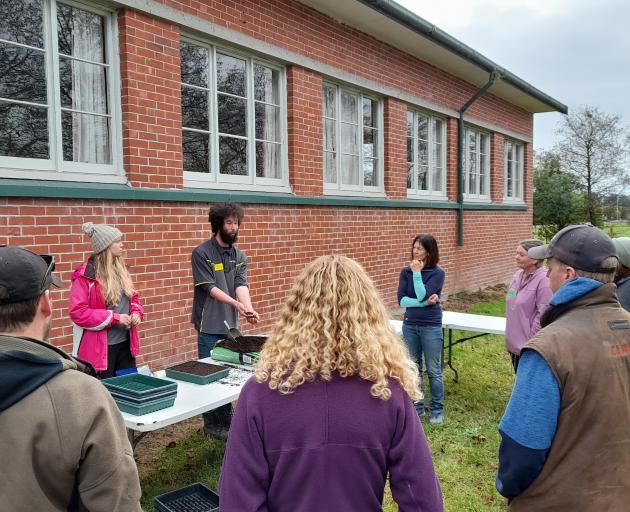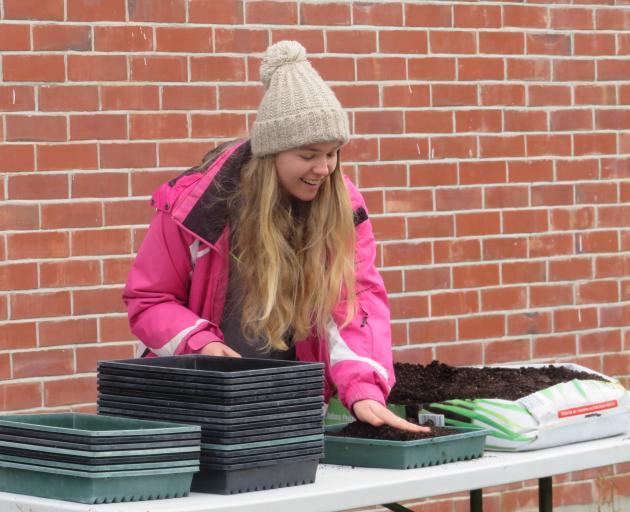
"It’s quite cool knowing seed collected from your farm is going back to your farm. I think there is something quite special emotionally about eco-sourcing."
Mr Ferguson, of Wai-Ora Trust, was guest presenter at the recent New Zealand Landcare Trust native plant propagation workshop at Eiffelton.
It was a collaboration between Mid Canterbury Catchment Collective and Wai-Ora Trust.
It was the first of its type in the area, but New Zealand Landcare Trust’s "Managing wetlands as farm assets" project co-ordinator Tony Watson said if there was further interest, similar workshops could be run again.
He was keen to collaborate with groups in sessions which benefited landowners, farmers and the environment.
The workshop, which taught budding growers how to source and grow plants suitable for wetlands, dryland and riparian planting, drew interest from around the district, with 20 people in attendance.

Collecting duff [vegetative matter that covers the forest floor] was best done from a natural remnant environment rather than from trees in rows and likely human planted, Mr Ferguson said.
Knowing you had the right plant seed was just as important, rather than collecting native weeds or foreign species in error, Mr Ferguson said.
Online websites such as iNaturalist (inaturalist.org) was a useful place for people seeking verification on plants, but also insects and skat.
There was also a popular book recommended called The propagation of New Zealand native plants, by Lawrie Metcalf.
At the nursery, staff double sieved the seeds to remove husks before cleaning with water to speed up the growing process. They were then stored in a fridge.
"The light stuff gets blown off, and you can use the different (sized) mesh as grades so that certain stuff goes through and the seed goes through or the seed stays on, Mr Ferguson said.

"Normally a bird will eat the seed, poop it out and all that flesh is taken off and then the seed is in the poop.
"If you’re growing native seeds, you want to take that flesh off the seeds before you sow them, otherwise you might be waiting an extra long time."
Alternatively, hard seeds could be stored in a jar of water and left to ferment.
But there was a fine line to being left too long and them going off.
"Think about how in nature that seed would have travelled ... would it have been by wind, water, birds or lizards? ... that sort of thing," he said.
"What we are trying to do is mimic nature. A lot of propagation and growing native plants is just to think like the plants. Another is trying to mimic the seasons."
Seeds which drop in winter, will not naturally germinate until spring, due to the temperature.
The nursery also used cold and hot stratification methods to encourage faster germination to meet product demand.
The seed was scattered across seed-raising mix, then lightly covered with the mix and placed in a protected area for germination.
"Managing wetlands as farm assets" is a three-year project working with farmers and the community to provide advice and knowledge about the range of benefits both natural and constructed wetlands offer the farming system, the environment and the wider community.
Attendees were able to prepare seed-raising trays to take home with either cutty grass, manuka and Carex secta seeds, or a mix of all three.













